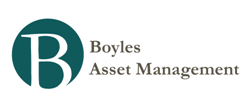Hoisington Q4 Letter
Factoring in a 4% Q4 growth rate, the U.S. economy expanded by 3% in real terms from the 4th quarter of 2009 through the 4th quarter of 2010. Despite this rise in GDP, the unemployment rate remained stubbornly high at 9.6% in the last quarter of 2010, only slightly lower than the 10% rate it averaged in the same quarter one year ago. Positive real GDP growth with high unemployment is the definition of a growth recession. An even slower growth rate of real GDP should be recorded over the next four quarters, suggesting the unemployment rate will be essentially unchanged a year from now. As we have noted previously, this modest expansion is due to the significant over-indebtedness of the U.S. economy. We see seven main impediments to economic progress in 2011 that will slow real GDP expansion to the 1.5%-2.5% range.
First, fiscal policy actions are neutral for 2011. Second, state and local sectors will continue to be a drag on the economy and labor markets in 2011. Third, Quantitative Easing round 2 (QE2) will likely produce only a slight economic benefit as the Fed continues to encourage additional leverage in an already over-indebted economy. Fourth, while consumers boosted economic growth in the second half of 2010 by sharply reducing their personal saving rate, such actions are not sustainable. Fifth, expanding inventory investment, the main driver of economic growth since the end of the recession in mid-2009, will be absent in 2011. Sixth, housing will continue to be a persistent drag on growth. Seventh, external economic conditions are likely to retard U.S. exports.
- Hoisington Q3 2012 Letter
Growth Recession Entering the final quarter of the year, domestic and global economic conditions are extremely fragile. Across the globe, countries are in outright recession, and in some instances where aggregate growth is holding above the zero line,...
- Hoisington Q2 2012 Letter
In the eleven quarters of this expansion, the growth of real per capita GDP was the lowest for all of the comparable post-WWII business cycle expansions (Table 2). Real per capita disposable personal income has risen by a scant 0.1% annual rate, remarkably...
- Pimco Cyclical Outlook: Deleveraging, Austerity And Europe’s Potential Minsky Moment
As things stand today, it is more likely that the ECB will leap to a rescue only when it is too late. Absent any increase in private or external sources of aggregate demand, the eurozone economy will likely experience a recession in 2012. Chinese deleveraging...
- The End Of The Growth Consensus - By John Taylor
This month marks the two-year anniversary of the official start of the recovery from the 2007-09 recession. But it's a recovery in name only: Real gross domestic product growth has averaged only 2.8% per year compared with 7.1% after the most recent...
- Don't Confuse The Economy With The Stock Market
Here are a couple of paragraphs from Unexpected Returns that highlight the importance of being careful not to confuse the economy with the stock market.Economic Growth and Stock Market ReturnsThe lack of correlation between economic growth and stock market...

